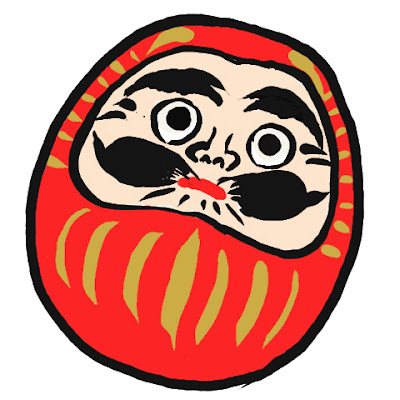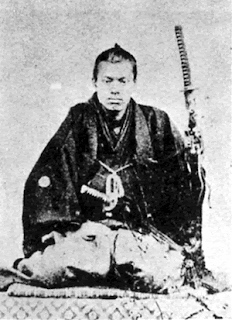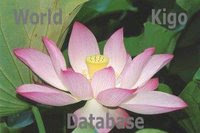[ . BACK to DARUMA MUSEUM TOP . ]
:::::::::::::::::::::::::::::::::::::::::::::::::::::::::::::::::::::::::::::::::::::::::::::::::::::
Seals and Stamps (inkan 印鑑, hanko 判子)
 CLICK for stamps from the Edo period!
Inkan
CLICK for stamps from the Edo period!
Inkan
They are usually used for official use and are mostly registered at the city office where we live to be effective. Instead of signing a document,you have to stamp it with your officially approved inkan.
There are two types of name stamps:
a jitsu-in (registered name stamp) and a mitome-in (regular name stamp).
Jitsu-in 実印(Registered Name Stamp)
Registered name stamps are used for important official documents such as car registration, documents involving housing and real estate, financial loan papers and notarized documents. On these occasions, you will need your registered name stamp and proof of name stamp registration.
Mitome-in 認印(Regular Name Stamp)
Used for such business as regular contracts and bank transactions.
How to Register Your Personal Name Stamp
Only one name stamp can be registered per person.
It must contain your first, last, full or a combination of your first and last name as shown on your foreign resident registration card, if you are not Japanese.
To register, you must apply in person and bring proof of identification (such as your foreign resident registration card) to the Resident Affairs Section of the city office. Once your name stamp is registered, you will be issued a name stamp registration certificate (card).
Hanko 判子
Hanko are the more artistic stamps used to sign your works of art,calligraphy, poetry or painting.
material used
vory, water-buffalo horn, black water buffalo, special boxwood (tsuge) and
boxwood from Satsuma (Kyushu), Mamoth ivory, Titan.
 Click on this photo for more pictures !
Click on this photo for more pictures !
Kokeshi, Wooden Dolls with Stamp in the bottom



.......................................................................

 source : starry.sunnyday.co.jp/products
source : starry.sunnyday.co.jp/products
.......................................................................
- quote wikipedia -
In Japan, seals in general are referred to as inkan (印鑑) or hanko (判子[).
Inkan is the most comprehensive term; hanko tends to refer to seals used in less important documents.
The first evidence of writing in Japan is a hanko dating from AD 57, made of solid gold given to the ruler of Nakoku by Emperor Guangwu of Han,called King of Na gold seal. At first, only the Emperor and his most trusted vassals held hanko, as they were a symbol of the Emperor's authority. Noble people began using their own personal hanko after 750, and samurai began using them sometime during the Feudal Period. Samurai were permitted exclusive use of red ink. After modernization began in 1870, hanko finally came into general use throughout Japanese society.
Government offices and corporations usually have inkan specific to their bureau or company, and which follow the general rules outlined for jitsuin with the following exceptions. In size, they are comparatively enormous, measuring 2 to 4 inches (5.1 to 10.2 cm) across. Their handles are often extremely ornately carved with friezes of mythical beasts or hand-carved hakubun inscriptions that might be quotes from literature, names and dates, or original poetry. Some have been carved with square tunnels from handle to underside, so that a specific person can slide his own inkan into the hollow, thus signing a document with both his own name and his business's (or bureau's) name. These seals are usually stored in jitsuin-style boxes under high security except at official ceremonies, at which they are displayed on extremely ornate stands or in their boxes.
For personal use, there are at least four kinds of seals. In order from most formal/official to least, they are:
jitsuin, ginkō-in, mitome-in, and gagō-in.
A jitsuin (実印) is an officially registered seal. A registered seal is needed to conduct business and other important or legally binding events. A jitsuin is used when purchasing a vehicle, marrying, purchasing land, and so on.
The size, shape, material, decoration, and lettering style of jitsuin are closely regulated by law. For example, in Hiroshima, a jitsuin is expected to be roughly 1⁄2 to 1 inch (1.3 to 2.5 cm), usually square or (rarely) rectangular but never round, irregular, or oval, and must contain the individual's full family and given name, without abbreviation. The lettering must be red with a white background (shubun), with roughly equal width lines used throughout the name. The font must be one of several based on ancient historical lettering styles found in metal, woodcarving, and so on; ancient forms of ideographs are commonplace. A red perimeter must entirely surround the name, and there should be no other decoration on the underside (working surface) of the seal, though the top and sides (handle) of the seal may be decorated in any fashion from completely undecorated to historical animal motifs to dates, names, and inscriptions.
Throughout Japan, rules governing jitsuin design are so stringent and each design so unique that the vast majority of people entrust the creation of their jitsuin to a professional, paying upward of US$20 and more often closer to US$100, and will use it for decades. People desirous of opening a new chapter in their lives—say, following a divorce, death of a spouse, a long streak of bad luck, or a change in career—will often have a new jitsuin made.
The material is usually a high quality hard stone, and far less frequently deerhorn, soapstone, or jade. It's sometimes carved by machine. When it's carved by hand, an intō ("seal-engraving blade"), a mirror, and a small specialized wooden vice are used. An intō is a flat-bladed pencil-sized chisel, usually round or octagonal in cross-section and sometimes wrapped in string to give the handle a non-slip surface. The intō is held vertically in one hand, with the point projecting from one's fist on the side opposite one's thumb. New, modern intō range in price from less than US$1 to US$100.
The jitsuin is always kept in a very secure place such as a bank vault or hidden carefully in one's home. They're usually stored in thumb-sized rectangular boxes made of cardboard covered with heavily embroidered green fabric outside and red silk or red velvet inside, held closed by a white plastic or deerhorn splinter tied to the lid and passed through a fabric loop attached to the lower half of the box. Because of the superficial resemblance to coffins, they're often called "coffins" in Japanese by enthusiasts and hanko boutiques. The paste is usually stored separately.
A ginkō-in (銀行印) is used specifically for banking; ginkō means "bank". A person's savings account passbook contains an original impression of the ginkō-in alongside a bank employee's seal. Rules for the size and design vary somewhat from bank to bank; generally, they contain a Japanese person's full name; a Westerner may be permitted to use a full family name with or without an abbreviated given name, such as "Smith", "Bill Smith", "W Smith" or "Wm Smith" in place of "William Smith". The lettering can be red or white, in any font, and with artistic decoration.
Most people have them custom-made by professionals or make their own by hand, since mass-produced ginkō-in would offer no security. They are wood or stone and carried about in a variety of thumb-shaped and -sized cases resembling cloth purses or plastic pencil cases. They are usually hidden carefully in the owner's home.
Banks always provide stamp pads or ink paste, in addition to dry cleansing tissues. The banks also provide small plastic scrubbing surfaces similar to small patches of red artificial grass. These are attached to counters and used to scrub the accumulated ink paste from the working surface of customers' seals.
A mitome-in (認印) is a moderately formal seal typically used for signing for postal deliveries, signing utility bill payments, signing internal company memos, confirming receipt of internal company mail, and other low-security everyday functions.
Mitome-in are commonly stored in low-security, high-utility places such as office desk drawers and in the anteroom (genkan) of a residence.
A mitome-in's form is governed by far fewer customs than jitsuin and ginkō-in. However, mitome-in adhere to a handful of strongly observed customs. The size is the attribute most strongly governed by social custom. It is usually the size of an American penny or smaller. A male's is usually slightly larger than a female's, and a junior employee's is always smaller than his bosses' and his senior co-workers', in keeping with office social hierarchy. The mitome-in always has the person's family name, and usually does not have the person's given name (shita no namae). They are often round or oval, but square ones are not uncommon, and rectangular ones are not unheard-of. They are always geometric figures. They can have red lettering on a blank field (shubun) or the opposite (hakubun). Borderlines around their edges are optional.
Plastic mitome-in in popular Japanese names can be obtained from stationery stores for less than US$1, though ones made from inexpensive stone are also very popular. Inexpensive prefabricated seals are called 'sanmonban' (三文判). Prefabricated rubber stamps are unacceptable for business purposes.
Mitome-in and lesser seals are usually stored in inexpensive plastic cases, sometimes with small supplies of red paste or a stamp pad included.
Most Japanese also have a far less formal seal used to sign personal letters or initial changes in documents; this is referred to by the also broadly generic term hanko. They often display only a single hiragana, kanji ideograph, or katakana character carved in it, They are as often round or oval as they are square. They vary in size from 0.5-to-1.5-centimetre wide (0.20 to 0.59 in); women's tend to be small.
Gagō-in (雅号印) are used by graphic artists to both decorate and sign their work. The practice goes back several hundred years. The signatures are frequently pen names or nicknames; the decorations are usually favorite slogans or other extremely short phrases. A gago in can be any size, design, or shape. Irregular naturally occurring outlines and handles, as though a river stone were cut in two, are commonplace. The material may be anything, though in modern times soft stone is the most common and metal is rare.
Traditionally, inkan and hanko are engraved on the end of a finger-length stick of stone, wood, bone, or ivory, with a diameter between 25 and 75 millimetres (0.98 and 2.95 in). Their carving is a form of calligraphic art. Foreign names may be carved in rōmaji, katakana, hiragana, or kanji. Inkan for standard Japanese names may be purchased prefabricated.
Almost every stationery store, five-and-dime store, large book store, and department store carries small do-it-yourself kits for making hanko. These include instructions, hiragana fonts written forward and in mirror-writing (as they'd appear on the working surface of a seal), a slim in tou chisel, two or three grades of sandpaper, slim marker pen (to draw the design on the stone), and one to three mottled, inexpensive, soft square green finger-size stones.
In modern Japan, most people have several inkan.
A certificate of authenticity is required for any hanko used in a significant business transaction. Registration and certification of an inkan may be obtained in a local municipal office (e.g. city hall). There, a person receives a "certificate of seal impression" known as i
nkan tōroku shōmei-sho (印鑑登録証明書).
The increasing ease with which modern technology allows hanko fraud is beginning to cause some concern that the present system will not be able to survive.
Signatures are not used for most transactions, but in some cases, such as signing a cell phone contract, they may be used, sometimes in addition to a stamp from a mitome-in. For these transactions, a jitsuin is too official, while a mitome-in alone is insufficient, and thus signatures are used.
- - - More in the WIKIPEDIA !
:::::::::::::::::::::::::::::::::::::::::::::::::::::::::::::::::::::::::::::::::::::::::::::::::::::
- quote -
Making an impression in Japan: a hanko primer
An important skill for lawyers is the ability to ignore your own children.
 - snip -
- snip -
Despite being deeply embedded in Japanese commercial culture, however, few, if any, laws actually require the use of hanko to execute contracts. In fact, Japan’s Commercial Code refers primarily to signatures (shomei) but contains a provision allowing a name together with a seal to have the same effect as a signature. Government filings are more likely to require seals. The Family Registry Act, for example, requires marriage, divorce and other filings to be both signed and sealed.
Under an 1899 statute,
foreign nationals are able to use signatures alone even when the law would otherwise require a seal. So you may be able to survive in Japan without one, though it depends on what sort of dealings you have. Some banks require you to have a hanko in order to open an account, and buying and selling real estate or borrowing money may be burdensome without one.
- snip -
- source : japantimes.co.jp/community 2016 -
:::::::::::::::::::::::::::::::::::::::::::::::::::::::::::::::::::::::::::::::::::::::::::::::::::::
Cloth cover box
length 6 cm, diameter 1,2 cm
Inside there is space for your personal stamp and a blot of red ink to use it.

Inside
 Photo from my friend Ishino.
Photo from my friend Ishino.
:::::::::::::::::::::::::::::::::::::::::::::::::::::::::::::::::::::::::::::::::::::::::::::::::::::
Seal from Ivory, in a box
Size about 15mm×60mm

 Photos from my friend Ishino san.
Photos from my friend Ishino san.
:::::::::::::::::::::::::::::::::::::::::::::::::::::::::::::::::::::::::::::::::::::::::::::::::::::::::::::::::::::::::::
hand-made stamps, even with cats
 - source : umekichi
- source : umekichi
:::::::::::::::::::::::::::::::::::::::::::::::::::::::::::::::::::::::::::::::::::::::::::::::::::::::::::::::::::::::::::
More about INKAN and Hanko
- further reference -
:::::::::::::::::::::::::::::::::::::::::::::::::::::::::::::::::::::::::::::::::::::::::::::::::::::::::::::::::::::::::::
yakiin, yaki-in 焼印 branding seal

Usually made from bronze.
They were used for official licenses (on wooden tablets), on geta 駄 sandals or boxes from sweet shops.
yakiin shokunin 焼印職人 craftsman making a branding seal
 source : edoichiba.jp/ yakiin ..
source : edoichiba.jp/ yakiin ..
There were very few in Edo, since once a seal is made, it lasts for a long time.
. Edo no shokunin 江戸の職人 Edo craftsmen .
:::::::::::::::::::::::::::::::::::::::::::::::::::::::::::::::::::::::::::::::::::::::::::::::::::::::::::::::::::::::::::
 inniku 印肉 shuniku 朱肉 stamp ink in vermillion color
inniku 印肉 shuniku 朱肉 stamp ink in vermillion color
a red paste kept in a special container.
also called indei 印泥
The paste was made as a mix from 艾 moxa mugword, paniya パンヤ panha, from the ceiba tree (kapok), himashi abura ひまし油 (蓖麻子油) Himashi oil (made from the seeds of トウゴマ Ricinus communis), matsuyani 松脂 pine resin and byakuroo 白蠟 white wax.
- - - - - And back to the Edo period:
 inniku no shikae 印肉の仕替へ
inniku no shikae 印肉の仕替へ
inniku uri 印肉売り exchanging and selling stamp pads
In Edo the paste for stamps was either vermillion or black, but soon more colors were introduced. Black made from
sumi 墨 was mostly used in shops for receipts.
There are even senryu 川柳 about stamping . . .
請人の印肉乾く春の風
ukenin no inniku kawaku haru no kaze
the stamp ink
of the guarantor dries out -
spring wind
During the Edo period, servants changed jobs usually in the third lunar month (degawari). During that period, a guarantor for a person had to stamp many documents. His stamp ink would become less and less, the box kept open all the time . . .
. WKD : degawari 出代 migrating of the servants .
. Repairmen in Edo .
:::::::::::::::::::::::::::::::::::::::::::::::::::::::::::::::::::::::::::::::::::::::::::::::::::::::::::::::::::::::::::
. My PHOTO ALBUM with Daruma Stamps
[ . BACK to DARUMA MUSEUM TOP . ]
[ . BACK to WORLDKIGO . TOP . ]
- #inkan #hanko #stamp #yakuin -
:::::::::::::::::::::::::::::::::::::::::::::::::::::::::::::::::::::::::::::::::::::::::::::::::::::::::::::::::::::::::::




























































